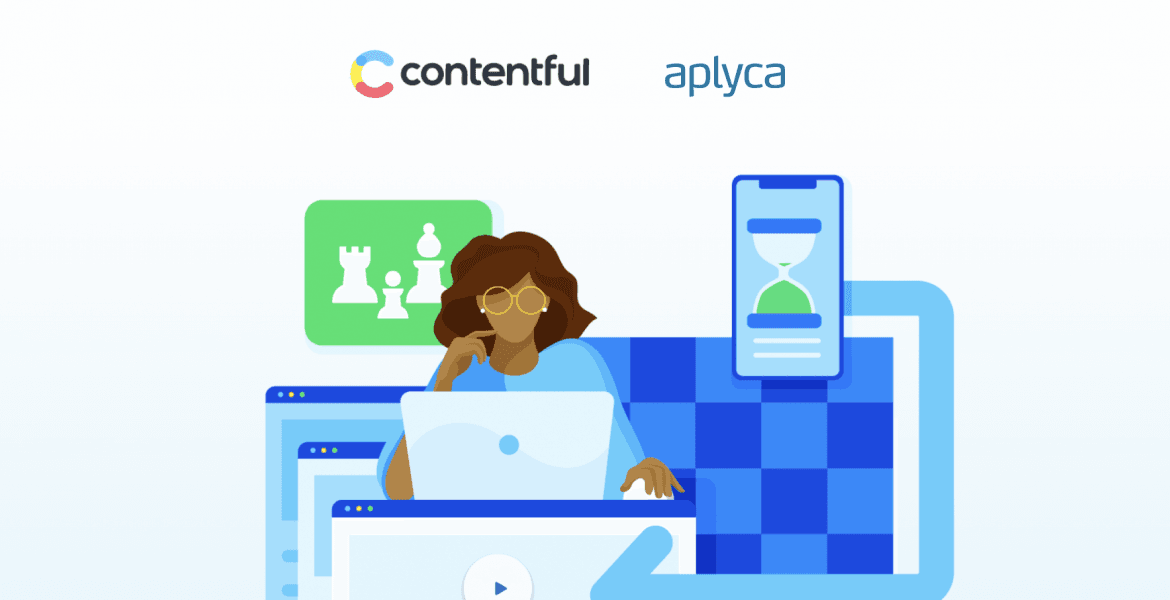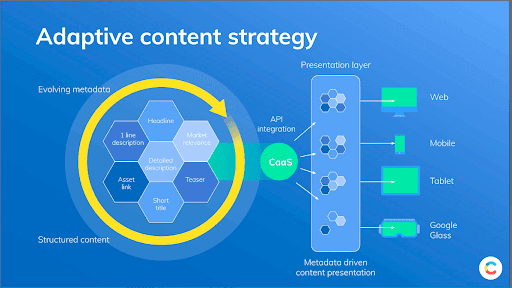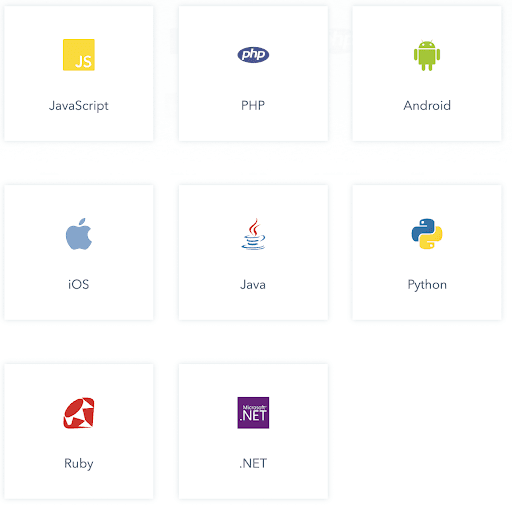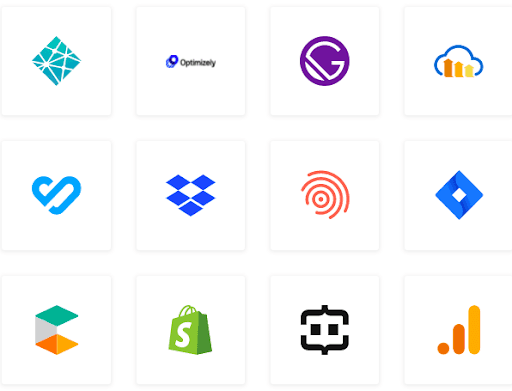
Contentful and the Headless CMS Trend
WEB DEVELOPMENT, INFRASTRUCTURE.
What is Contentful?
Contentful is a content manager hosted in the cloud for the development of modern digital experiences. It operates under a decoupled, or headless model that allows serving the same content in many channels (omnichannel) with ease. For example, the same content can be used on a marketing website, on an e-commerce platform, within a mobile app, or within enterprise web software applications.
Contentful allows you to manage centralized content to be consumed on multiple platforms that can be developed with different approaches and teams.
At the heart of Contentful is the REST API or GraphQL and SDKs (Software Development Kit) for different languages.
By focusing on the content model, Contentful allows you to build content entities very quickly and flexibly.
History of Contentful
Contentful was founded in Berlin in 2013, the same year they launched their first version of their platform, which they called 'Storage Room' at the time. The original idea of its founders was 'a CMS for mobile apps' in 2011. The firm changed its name to Contentful and quickly evolved to offer a content delivery service. As of 2021 the firm has offices in San Francisco, Denver and Berlin with a valuation of over three billion dollars ($3 billion USD).
Today, Contentful has an online marketplace of third parties and its own, where it offers its users tools that give it more versatility and utility. This makes its platform one of the most used by companies around the world, including brands such as: IKEA, Jack in the Box, Spotify, Red Bull, Twilio and Urban Outfitters among others.
Headless and the use of CMS with APIs
The term "Headless" refers to the use of a CMS through an API (Application Programming Interface) without the CMS being responsible for rendering the content in the Front-End layer.
In Headless, the content management system (CMS) delegates the display of content in exchange for consistency, flexibility, scalability and simplicity.
Since the beginning of web content management systems, the engine (CMS) was in charge of everything: managing the content and also displaying it to the end user through different templates, themes or extensions. This convenience had its implications: the content was used 'mainly for websites' and was tied to the implementation details of the content management system without allowing reuse.
A headless model exposes an API that can be accessed by multiple clients: websites, mobile apps and software applications. Developers are then free to choose the presentation layer and presentation logic independent of the CMS.

Who is Contentful for?
Contentful is more than a platform for content management, it is a tool that facilitates the publication of content on all platforms, which optimizes the creation, distribution and dissemination of content.
Contentful is useful for various types of customers, but has generally appealed to experienced customers who are committed to a roadmap for the evolution of their digital applications. They have distributed teams, use different platforms, programming languages and teams and generally see value in embedding content in different channels.
Contentful has been adopted by globally recognized companies such as Nike, Disney, EA, Viacom, Spotify and Red Bull among many others.
A striking feature of Contenful is that it has very low barriers to entry. As a cloud service with subscription-based plans (from free to enterprise) companies can create trial accounts in minutes and start experimenting with the content model and building their applications.

Advantages of Contentful
Contentful stands out for its benefits when it comes to creating and publishing content, and some of the special features we like about it are the following:
Content Distribution Infrastructure: This platform provides its own content delivery network (CDN), with the main purpose of delivering content to users 24 hours a day.
Content Model Management: It is possible to design and create each customized content model according to the needs of your business. It is important to note that there are no pre-designed content models, therefore, you must define the model that fits your requirements.
Simple user interface: One of the features of Contentful is that its user interface is really simple and its use is very intuitive, it is not necessary to have programming knowledge to use it optimally.
Omnichannel content distribution: Contentful has an API that is responsible for distributing all content created across all platforms with just one click, whether mobile, web or any other type of platform.
Backup: All the information and data of your website, app, or program is backed up in two separate servers, and in case of deletion, they have a 25-day recovery window, so there is no need to worry about accidental data loss.
Content management without coding: Being completely intuitive to use, Contentful's user interface allows even people without any programming knowledge to manage this platform normally. As no coding is required to use it, it is possible to add and edit content types, as well as manage them within the platform.
It should be noted that Contentful reduces the effort in content management, but still requires development of a web page or application so it does require development.
Contentful Data Model
Contentful provides the freedom to create your own content model, which means you can structure and organize all kinds of information entities.
The Contentful model (domain model) is divided into sections, which are: organizations, spaces, content types and content entries, where each of them has a specific task:
Organizations: they are in charge of controlling the spaces, therefore, they are the ones that create, organize and eliminate them, and they are also in charge of assigning the roles of each user in each space.
Spaces: These give you the ability to interact with content types and entries.
Content types: These represent the templates that give shape to the content that is being created, this is done through fields that can be defined in different types, such as JSON or files for example.
Content entries: These are the contents that already have the information entered or entered in the template.
The App Framework
The Contentful App Framework is designed to provide the best possible help to users, offering them useful tools with which it is possible to customize Contentful to meet the needs and requirements of both the user and the company or business.
Similarly, with the App Framework, teams have the ability to integrate third-party services, or even create custom integrations to suit the type of business or company,
This integration of services with Contentful through applications allows you to bring all relevant tools into the context of the user interface, allowing you to optimize, deploy and deliver all content.
Contentful Framework applications make possible a wide variety of platform enhancements, from simple optimizations in the editor to complete website integrations.
The following are some common examples:
Add custom editors that enhance the content creator's experience.
Manage content versioning for A/B testing.
Adapt the input editor for specific needs or preferences.
Trigger actions from CI compilations on third-party systems.
Applications that integrate with any service
These allow users to create workflows tailored to the needs of each company, thus increasing workflow efficiency. Among the integrated apps offered by Contentful are Compose and Launch, which provide creators with tools that optimize and streamline content delivery.

In the Contentful marketplace, there are many applications available, each of them developed to implement a solution or facilitate a specific task. Among them we can highlight the following:
Arboretum: Application to create site maps offering tree-like content hierarchies.
Bynder: A provider of customizable layouts, publishers can select any Bynder media without leaving Contentful.
Cloudinary: Asset library that links to Contentful to improve and streamline the publishing process.
Commerce Layer: It is an App that directly links your products by their SKU to the entries in Contentful, ideal for e-commerce.
Frontify: It is an App for brand management, with it you can make sure that all the content to be published is compatible with the brand or company.
Contentful adoption challenges
The Headless CMS model has many advantages over the usual way of creating and publishing content, however, there are some changes that are important to keep in mind.
When there are drastic changes in technologies and practices, there is a combination of cases where very difficult things become easy, but easy things become transiently more difficult.
We mention some challenges worth keeping in mind when considering Contentful, especially if migrating from existing CMSs. It should be noted that these considerations can be mitigated with third-party applications or implementation strategies.
Evolving technology: While these development practices have many supporters, they also have some detractors who point out that a hybrid model or a well-implemented traditional CMS is still a solid option. Contentful is rapidly evolving to cover ambitious use cases with higher content complexity, information volumes and special requirements.
WYSIWYG: The well-known acronym 'What you see is what you get' is complex to maintain with headless decoupling. Many CMSs have gone in the direction of interfaces that display content as a user will see it from editing with drag-and-drop build models, page builders and other mechanisms. Contentful has responded with preview environments.
New skills: While the development experience can be much more efficient, it requires a team with experience in both content modeling and frontend layer implementation. CMS development attracts developers of all skill sets, but creating modern, world-class digital experiences places much higher demands on novice teams.
Content organization: Contentful does not structure content hierarchically so it does not have the usual 'content trees' to organize content. This decision has been explained with their respective alternatives although we saw that in the 2021 Fast Forward the commercial App Arboretum was announced to facilitate modeling multilevel structures with a hierarchical model.
Missing' functionalities: When buying Contentful with broader content management systems, it is certain that there may be specific functionality missing. These may not be identified at the start of a project, require the use of Apps from the Contentful ecosystem or custom development using a Serverless model.
Contentful in brief
By integrating with a wide range of applications, Contentful is a CMS that allows you to develop content in a very friendly and easy way, without the need for technical knowledge. Similarly, being an omnichannel platform, it has the necessary tools to meet all requirements in terms of content management.
Based on very strict efficiency criteria, and from our experience with Contentful, we must express that this platform represents an attractive alternative for different projects with a Content as Service model, a fully hosted service by the manufacturer and monthly values from free (Community Plan), Team (from US$489 per month) and Enterprise (customized prices).
Contentful in Colombia and LATAM
In Aplyca we became a Contentful Partner in November 2021 being one of the first firms in Colombia and Latin America to create a Headless development practice that includes Contentful.
Our focus in CMS for over 15 years has been on creating high traffic sites, complex content and multi-site structures that support content publishing using a variety of approaches.
Additionally, our microservices development capabilities and Cloud Native environments are an excellent complement to the creation of more complex digital experiences.
We believe that the headless model brings opportunities to take web content management to new horizons.